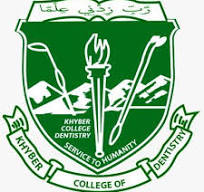PATTERN OF TOOTH LOSS IN PATIENTS REPORTING TO KHYBER COLLEGE OF DENTISTRY PESHAWAR
DOI:
https://doi.org/10.33279/jkcd.v3i1.513Keywords:
Tooth loss, Dental extraction, Khyber College of Dentistry.Abstract
Objective: To study the pattern of tooth loss in patients reporting to Khyber College of Dentistry, Peshawar.
Methodology: A sample of 164 patients was examined in the Out Patient Department of Khyber College of Dentistry. Clinical examination was carried out to determine the number of lost or extracted teeth of the patient which were then marked in different quadrants. Age, sex, address and socioeconomic status of the patient were also recorded. The collected information was documented on a specially designed Performa and analyzed by SPSS version 17.0.
Results:Out of 164 patients 38.42% were male and 61.58% were female. Commonest age group with teeth loss was 26-35 years (24.40%). Majority of the patients (64.63%) belonged to poor socioeconomic category while 57.9% patients were illiterate. Most of the patients (41.5 %) were reported to have multiple missing quadrants, both in Maxilla and Mandible.
Conclusion: In this study majority of the patients involved were female. Most of the patients were illiterate who belonged to poor socioeconomic class. Majority of the patients had multiple missing teeth.
Downloads
Published
How to Cite
Issue
Section
License
Copyright (c) 2012 Rabia Ali, Basheer Rehman, Nazia Noreen

This work is licensed under a Creative Commons Attribution-NonCommercial-NoDerivatives 4.0 International License.
You are free to:
- Share — copy and redistribute the material in any medium or format
- Adapt — remix, transform, and build upon the material
- The licensor cannot revoke these freedoms as long as you follow the license terms.
Under the following terms:
- Attribution — You must give appropriate credit , provide a link to the license, and indicate if changes were made . You may do so in any reasonable manner, but not in any way that suggests the licensor endorses you or your use.
- NonCommercial — You may not use the material for commercial purposes .
- No additional restrictions — You may not apply legal terms or technological measures that legally restrict others from doing anything the license permits.









